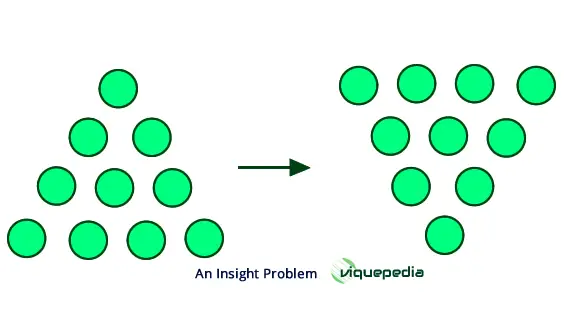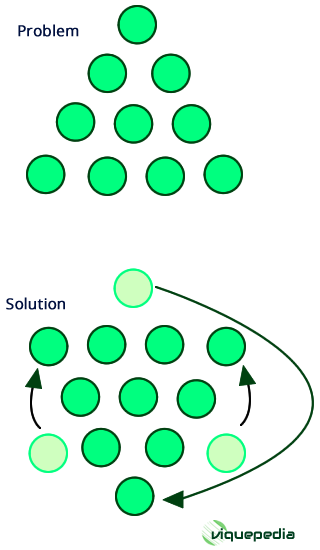Problem Solving
In this literature, we’ll consider how we act on the information we represent in our minds, by taking a close look into problem solving strategies.Problem Solving: Applying Mental Strategies to Solving Problems
Psychologist Edward Thorndike observed that animals placed in his puzzle box used trial and error to solve problem of escaping from the enclosed compartment. The animals would try one response after another until they stumbled on the action that activated the escape mechanism.
Problem solving is a cognitive process in which we employ mental strategies to solve problems. A form of thinking focused on finding a solution to a particular problem, in other words.
Solving a problem using a trial and error is a “hit-or-miss” approach in which we try one solution after another until we find the correct one.
Some people solve problems by trial and error, whereas others report “Eureka!” type experiences in which solutions just seem to suddenly “pop” into their minds. Some psychologists referred to this sudden awareness of a solution to a problem as insight.
Cognitive psychologists believe that insight results from restructuring a problem so that its elements fit together to render a solution. Restructuring may occur when the person sees the problem from a different perspective, notices new information, or recognizes connections between elements of the problem that were previously overlooked. Figure X shows another type of insight problem.

|
| Figure X An Insight Problem | Your task here is to move only three of the dots to make a downward-facing triangle. You can try it using a stack of poker chips. If you get stuck, see Figure X1 underneath. Source: Metcalfe, 1986. |
Want to jar a sudden flash of insight to solve a problem that’s been plaguing you? How about getting a jolt to the brain? Recently, neuroscientists found that when people who were struggling to solve a difficult problem received a mild electrical current applied to a particular part of the head, they were more likely to generate a novel, workable solution than were those in a control group (Chi & Snyder, 2011).
The electrical jolt may have disrupted brain networks to generate more creative solutions. Neuroscientist envision a possible future when people might don an “electric thinking cap” to trigger fresh insights when faced with a difficult problem (“Electric Thinking Cap?” 2011).
| Figure X1 Solution to Insight Problem | Move only three of these dots to make a downward-facing triangle. |

|
We may sometimes arrive at a correct solution through trial and error or by sudden insight, but these problem-solving approaches have certain drawbacks. Trial and error is tedious. You must try one solution after another until you happen on the right one. And mulling over a problem while waiting for a sudden flash of insight to occur may require quite a long wait. How might we approach problem solving more efficiently?
We'll spend the remainder of the literature, considering some problem-solving strategies that may prove helpful. We'll also explore common pitfalls that can impede our problem-solving efforts.
- Algorithms
An algorithm is a step-by-step set of rules for solving a problem. According to cognitive psychologists, these step-by-step set of rules will always lead to a correct solution to a problem. You probably first became acquainted with algorithms when you learned the basic rules (algorithms) of arithmetic, such as carrying the number to the next column when adding columns of numbers.
As long as you applied the rules precisely to an arithmetic problem, you were guaranteed to get the right answer. But the major drawback to using algorithms in solving life problems is finding one that precisely fits the particular problem. Even if you lack a precise algorithm, you might still boost your chances of solving a problem by using an imprecise or working algorithm, which is a general set of guidelines for solving a particular problem. For example, a working algorithm for achieving a good grade in psychology would be to set aside a certain number of hours to study the text and other readings each week, attend class regularly, and participate in a study group. Will this guarantee success? Perhaps not. But the odds are in your favor.
- Heuristic
A rule of thumb or mental shortcut used to solve problems or make judgments or decisions is called a heuristic (Wray, 2010). Heuristics Opens in new window do not guarantee a solution, but they may help you arrive at one more quickly (Schwab, 2009).
One example is the means-end heuristic, by which we evaluate our current situation and compare it to the end result we want to achieve. We then develop a plan to reduce the distance between the two in a step-by-step approach.
In using a backward-working heuristic, we start with a possible solution and then work backward to see if the data support the solution. For example, a psychologist seeking the causes of schizophrenia might start by proposing a model (schizophrenia as a genetic disease) and then gather evidence to test whether the available data fit the model.
In using another heuristic, creating subgoals, we start by breaking down a larger problem down into smaller, more manageable problem. Scientists use this strategy when they assign different teams to work on different parts of a problem, called sub-goals. In AIDS research, for example, one team might work on how HIV penetrates the cell, another on how it reproduces, and so on. Solving the riddle of HIV may depend on knowledge gained from achieving each subgoal.
- Analogies
In problem-solving, analogy is a strategy based on using similarities between the properties of two things or applying solutions to past problem to the problem at hand.
When we use an analogy to solve a problem, we apply knowledge gained from solving similar problems in the past. However, we may fail to recognize how solutions to one problem can be modified or adapted to solve new problems.
Analogies are most useful when similarities exist between old problems and new ones. Consider the analogy used by Alexander Graham Bell Opens in new window, the inventor of the telephone. By studying the human ear, he observed how sounds are transmitted when the eardrum, which is a type of membrane, vibrates. He applied this idea of a vibrating membrane used to transmit sounds in designing the first working telephone (M. Levine, 1994).
- Incubation Periods
An incubation period is a respite from active problem-solving efforts, which may facilitate finding a solution to the problem at hand. It often helps to take a break from a problem, especially when you reach an impasse. This type of respite is called an incubation period because it is assumed that the passage of time helps the person develop a fresh perspective on the problem, which may lead to a sudden realization of the solution.
The person may also better understand which pieces of information are relevant to solving problem and which are not.
related literatures:
- Jeffrey S. Nevid, Psychology: Concepts and Applications. (p. 255-7) Problem Solving: Applying Mental Strategies to Solving Problems

